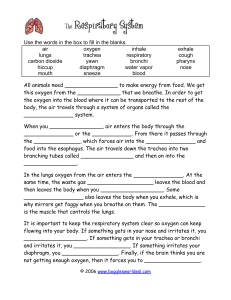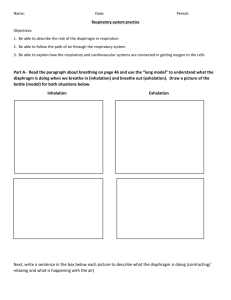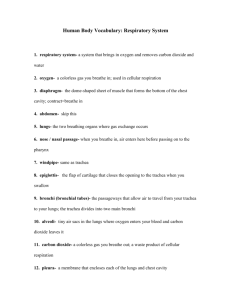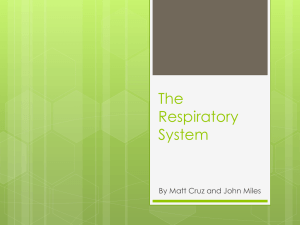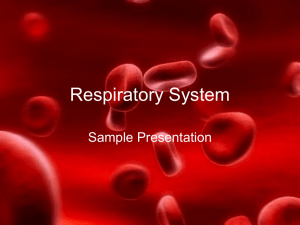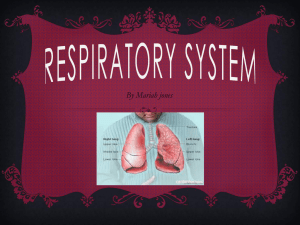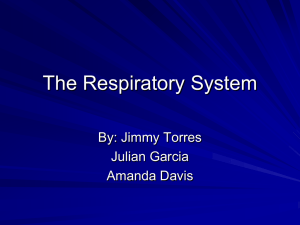Respiratory System WS
advertisement
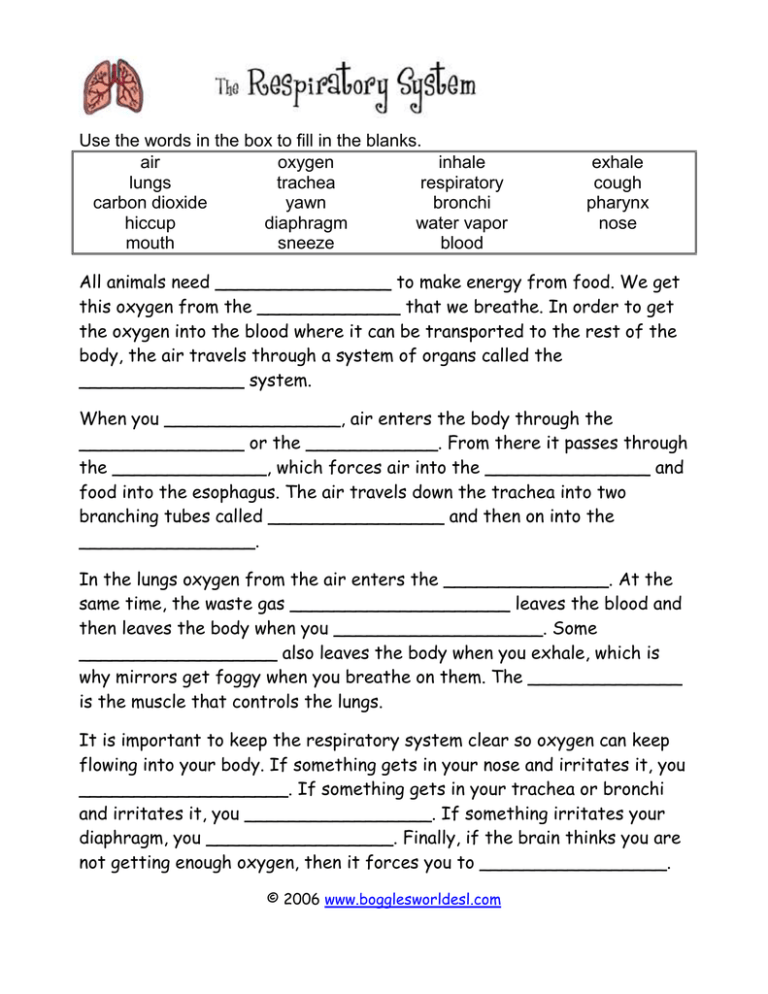
Use the words in the box to fill in the blanks. air oxygen inhale lungs trachea respiratory carbon dioxide yawn bronchi hiccup diaphragm water vapor mouth sneeze blood exhale cough pharynx nose All animals need ________________ to make energy from food. We get this oxygen from the _____________ that we breathe. In order to get the oxygen into the blood where it can be transported to the rest of the body, the air travels through a system of organs called the _______________ system. When you ________________, air enters the body through the _______________ or the ____________. From there it passes through the ______________, which forces air into the _______________ and food into the esophagus. The air travels down the trachea into two branching tubes called ________________ and then on into the ________________. In the lungs oxygen from the air enters the _______________. At the same time, the waste gas ____________________ leaves the blood and then leaves the body when you ___________________. Some __________________ also leaves the body when you exhale, which is why mirrors get foggy when you breathe on them. The ______________ is the muscle that controls the lungs. It is important to keep the respiratory system clear so oxygen can keep flowing into your body. If something gets in your nose and irritates it, you ___________________. If something gets in your trachea or bronchi and irritates it, you _________________. If something irritates your diaphragm, you _________________. Finally, if the brain thinks you are not getting enough oxygen, then it forces you to _________________. © 2006 www.bogglesworldesl.com Respiratory System Worksheet Using your respiratory homework from the weekend, match the structure to the number in the diagram. Make sure all numbers are correctly labeled. Fill in the table with the structure name and function. Turn in your homework with the worksheet. Respiratory Questions: 1) What keeps food from going down our windpipe? 2) What role do red blood cells play in respiration? 3) How are plants our partners in breathing? (Think of Biology 1!!!) 4) What are your vocal cords and how do they help you make sound? 5) What is the purpose of the C-shaped rings of tough, rubbery cartilage that are in your trachea? 6) What is the purpose of the mucus in your nose? 7) What muscle allows you to breathe in and out? 8) Name all of the structures of the UPPER respiratory tract. 9) How is the respiratory system linked to the cardiovascular system? 10) What is the medical term for the Adam's apple?
